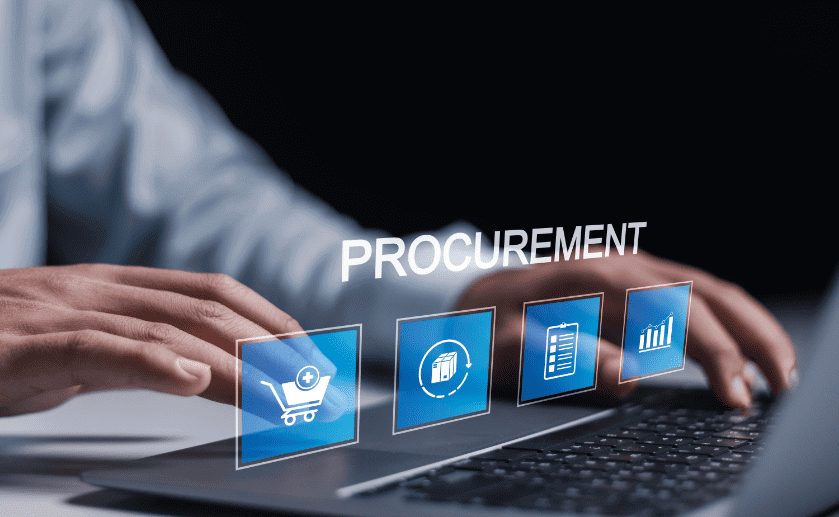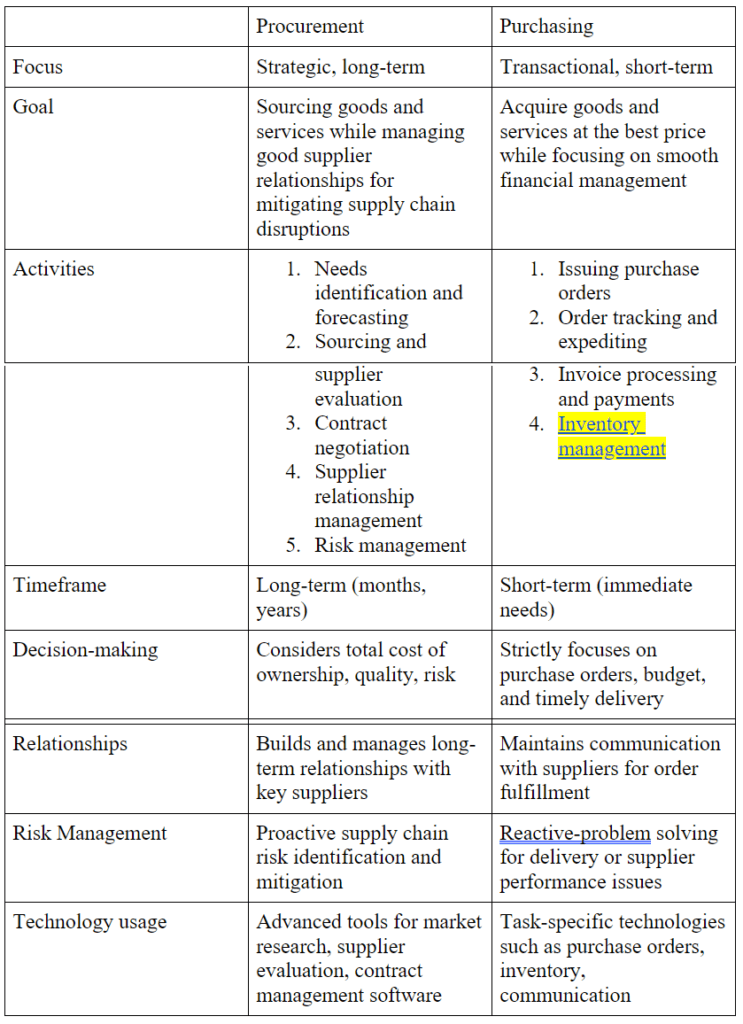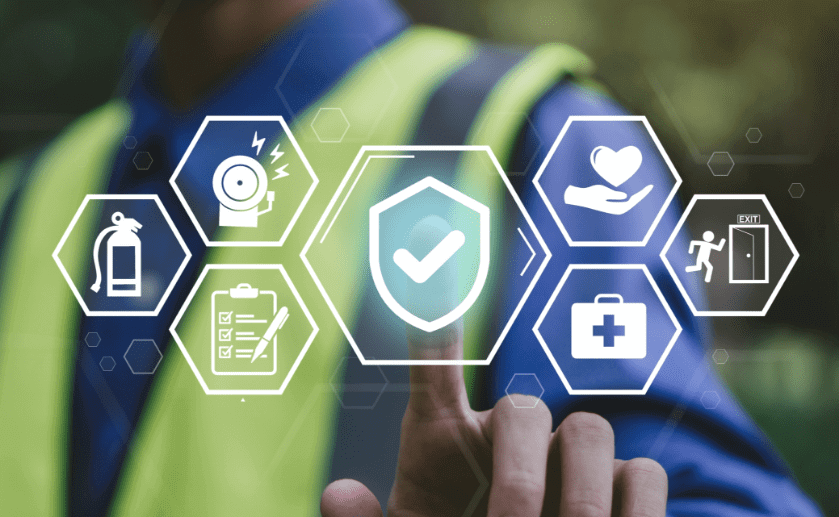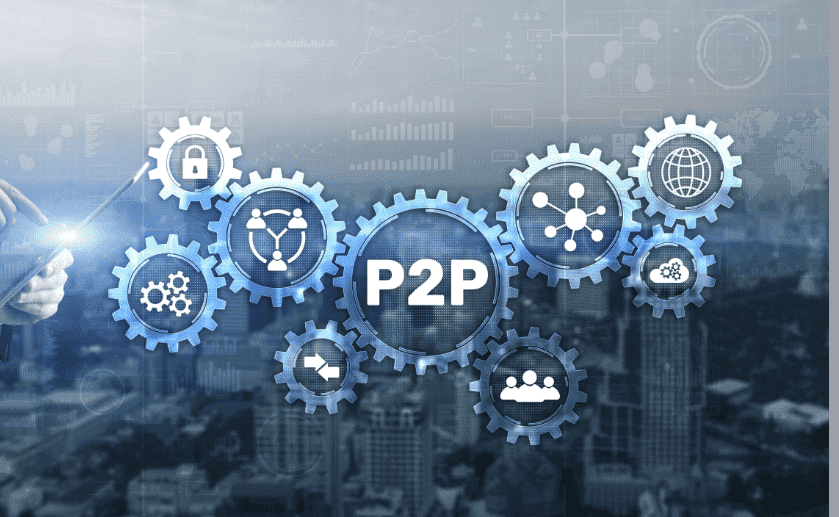The Impact of Geopolitical Risks on Global Supply Chains and Procurement Strategies

The Impact of Geopolitical Risks on Global Supply Chains and Procurement Strategies
The World Economic Forum’s survey report in 2023 revealed that more than half of respondents (54%) anticipated instability and risks of global crises in 2024, with geopolitical events driving at the front seat.
The events including trade wars, political events (elections), regional conflicts, etc are quite the concerns. These growing threats are directly or indirectly impacting businesses’ supply chains leading to delays, disruptions, increased costs, and material shortages. To navigate these complexities, businesses should stay informed about geopolitical risks and develop strong procurement strategies to mitigate them and maintain supply chain resilience.
Today, we’ll explore geopolitical risks and their impact on the global supply chain of businesses. Additionally, we’ll share the current geopolitical crises of 2024 and their effect on businesses operating globally and also suggest some strategies to mitigate these risks and ensure business continuity in an increasingly evolving world.
So, let’s get started!
What are Geopolitical Events & Uncertainties?
Simply put, Geopolitical events and uncertainties are unpredictable risks arising from disruption caused by uneven political or diplomatic relations between nations. These risks can take any form, including political instability, military conflicts, international wars, terrorist threats, economic crises, geographical events, and climate risks.
These risks can directly or indirectly affect the global economy and businesses. The direct impacts are surging prices, increased uncertainties, financial transaction issues, capital control, and higher transportation risk. The indirect effects include disrupted trade flow, shortage of resources, higher inflation, and risks in the supply chain. Typically, geopolitical risk occurs when a major conflict, a shift in power, or a national crisis happens from a nation’s involvement in international matters.
For example, U.S. elections will have a significant impact on all the global economies. The U.S. is one the most powerful nations and with its elections comes several uncertainties and potential risks as new powers and agendas might overtake.
These risks equally impact both the nation itself and the global community around the world. Unlike other types of risks, geopolitical risks are quite difficult to predict and come as an unexpected shock and they might escalate or create massive challenges for businesses.
Currently, globalization has become a major contributor to fueling these risks as businesses across the globe are increasingly interconnecting different economies by exchanging goods and services. Now, the major focus of businesses operating worldwide is to understand how these risks are affecting their supply chain system. And come up with new procurement strategies to help build resilience, adapt to modern marketing challenges, and prepare for unforeseen risks.
How do Geopolitical Risks Affect the Global Supply Chain?
Geopolitical risks are indeed a game-changer for businesses; they can disrupt a business’s healthy supply chain in a fraction of the time. As companies increasingly shift to the international level to source materials, manufacture products, and distribute goods, the impact of geopolitical events has become more critical. Below is an analysis of how these risks can affect the supply chain:
1. Disruption of the supply chain
In various situations, geopolitical risks can disrupt the complete supply chain system. For instance, a war outbreak can put manufacturing plants, transportation systems, and communication mediums on hold. Such disruption can cause a global level of supply shortage and a halt of production, resulting in significant financial losses.
2. Delay in delivery
When geopolitical tensions, such as trade wars, labor strikes, or regional conflicts emerge, it can lead to delayed delivery times. In case of political instability in regions with manufacturing and shipping setups, transportation routes may be disrupted and ports might be closed. These kinds of situations can lead to delays in the delivery, affecting scheduled deliveries, and unfulfilled customer demands.
3. Increased transportation cost
The emergence of a geopolitical crisis can lead to a rise in transportation costs. For example, situations like the imposition of tariffs, rerouting transportation to avoid conflict zones, or increasing security measures can inflate the cost of transportation moving goods across borders. Additionally, finding alternative routes or transportation to avoid risky regions might drive up expenditure, overall impacting the supply chain budget and profitability of businesses.
4. Shortage of materials
Geopolitical events can disturb the supply of raw materials, resulting in a shortage of materials. Let’s understand it with an example, there’s conflict in a region rich in essential minerals and due to this, the local government has limited access to these materials. During such conflicts, material shortage can lead to a delay in production, forcing companies to seek resources from other suppliers, which may not stand out in quantity or quality requirements. This can ultimately disrupt the production process.
5. Fluctuation in currency value
Geopolitical instability and events can lead to fluctuations in currency values, creating financial uncertainty. Businesses operating globally can encounter currency unpredictability, affecting the cost of imports and exports, and resulting in uncertain pricing and profit margins. For instance, a sudden devaluation of a supplier’s national currency could reduce costs or might signal economic instability, leading to a reevaluation of business relationships.6.
6. Changes in trade policies
Sudden changes in the trade policy including imposition of tariffs and import/export restrictions can occur during geopolitical tensions. These policy shifts can create barriers for businesses to trade, forcing companies to quickly adapt or face the risk of losing their market. Such unpredictable trade policy changes can make long-term planning difficult for businesses.
7. Shift in supply-demand
Geopolitical risks can impact the balance of supply and demand in the global markets. For instance, a conflict in a major oil-producing region can reduce the supply of oil, driving up its prices, and impacting industries depending on fuel. Similarly, sanctions on a specific country can lower the supply of goods from that nation, while increasing the demand for fuel in other regions. This shift in supply-demand can lead to price hikes and supply chain disruptions.
Some recent geopolitical events impacted the Supply Chain
The rising tension and geopolitical events between countries can impact the global supply chain. Here are two such geopolitical crises from 2024 that might affect several businesses’ supply chains:
The Red Sea Crises

Image source: U.S. Energy Information Administration
Yemen Houthi group has attacked cargo ships in Bab al Mandbeb Strait from the southern side of the Red Sea. This launch has caused many global shipping and oil companies like Maersk and British Petroleum to halt their transportation in that area and suspend shipments.
Hence, ships of these companies are avoiding their route from Europe to Asia, especially Egypt’s Suez Canal. This canal was considered the maritime route connecting Europe and Asia, accounting for 12% of the world’s shipping traffic. This crisis is directly causing shipments to travel longer routes, adding cost to transport, and increasing oil prices.
The U.S.-China Tension
The rising U.S.-China trade tension will continue to impact the global supply chain. The US has imposed export restrictions on China, particularly in the tech sector due to intellectual property concerns. This intensified trade tension between both nations. As a result, the trade of Liquified Natural Gas (LNG) between them is fueling a spark in their relations as China is a major importer of US LNG.
Now in response, China has imposed its own export restrictions on gallium, germanium, and other metals which has caused an increase in commodity prices, further complicating the entire global supply chain economy.
Procurement Strategies to Mitigate Risks in the Supply Chain
Businesses in order to mitigate risks should implement strong procurement strategies, catering to their specific needs. Following are some of the strategies that can help businesses save from impromptu geopolitical crises:
1. Digital supply chain
Digital supply chain helps in predicting geopolitical risks by using tools and tech to analyze data, identify patterns, and predict potential disruptions. These technologies include Artificial Intelligence, the Internet of Things, Predictive Analytics, and Blockchain to monitor supply chain operations, enabling companies to detect and spot potential risks early and manage them in real time.
2. Consider nearshore or reshore strategy
Businesses should consider adopting a nearshore or reshore strategy to mitigate risks associated with long-distance shipping. This ensures reduced risks or disruptions related to long-distance shipping and shortened delivery times.
3. Smart Inventory Management
Adopt a lean inventory management strategy, like just-in-time (JIT) management, to avoid overstocking. Similarly keep stocks of essential items as a backup to protect against shortages.
4. Work with multiple suppliers
Instead of relying on just one supplier for importing materials or commodities, work with multiple suppliers. It will help businesses reduce risks of geopolitical instability and ensure backup options.
5. Build Strong Supplier Relationships
Invest in long-term relationships with the suppliers. This will improve their ability to manage risks, deliver on time, and boost their overall performance and reliability.
In a Nutshell
Geopolitical risks and events have the potential to impact the supply chain operations of businesses globally. To reduce the impact of these risks, businesses should follow comprehensive approaches and strategies. The strategies enable them to identify potential disruptions, mitigate the risks, build durability, and align with global market changes.
Apart from integrating mitigation strategies, companies can boost their supply chain operations by leveraging modern tools and techs. Additionally, by developing emergency backup plans, enterprises can facilitate long-term relationships.
Is your Supply Chain ready to mitigate the Geopolitical Risks?
If not, Moglix can help you mitigate disruptions and ensure business continuity. Our Supply Chain Risk Management Solutions understand the crucial importance of managing supply chain risks for the seamless operations of your business. Our solutions can empower you to identify, assess, and navigate potential risks, ensuring continuity and durability worldwide.
Sustainable Procurement: Integrating ESG Criteria into Supplier Selection

Sustainable Procurement: Integrating ESG Criteria into Supplier Selection
This powerful statement was made a decade ago, yet remains as true for businesses today as it did then. With the world witnessing climate change, economic crises, and social inequalities, the urgency of adopting sustainable practices has never been more relevant. A sustainable business doesn’t just benefit the planet, people, and profit; it also plays a crucial role in addressing these global challenges.
Amidst these challenges, sustainable procurement has emerged as both a corporate responsibility and a strategic necessity. It’s not just about meeting businesses’ rising concerns and demands but also about contributing to a safer, more environmentally friendly future.
Sustainable procurement incorporates Environmental, Social, and Governance (ESG) principles into the procurement, purchasing, and supplier selection process. It should deliver value for money while minimizing its environmental, social, and economic impact.
According to one study conducted by Maseno University, Kenya states that selecting suppliers based on sustainable (ESG) criteria can increase procurement performance by a staggering 76.4%. This statistic highlights the significant advantages that businesses can gain by adopting sustainable procurement practices.
Going beyond the traditional focus on price and quality, sustainable procurement aims to reduce negative environmental impacts, support social growth, and facilitate ethical governance practices throughout the supply chain.
Today, what businesses are facing is massive pressure from investors, consumers, and regular bodies to act responsibly and ensure sustainability in the long run. So, to suppress this pressure, we’ll delve into the benefits of sustainable procurement, explore the role of ESG criteria in supplier selection, and provide practical steps for integrating these ESG factors to build sustainable supply chains.
Benefits of Sustainable Procurement
As per McKinsey’s research, ESG criteria can lower business costs by 5-10%, focusing on waste reduction and operational efficiency. Sustainable procurement offers multiple benefits that impact businesses’ social, environmental, and governance state. A few benefits are listed below:
- It reduces supply chain risk by ensuring suppliers adhere to standard ESG practices.
- Lowers the operational cost by implementing energy-efficient processes, leading to long-term savings.
- Incorporating sustainable, transparent, and ethical practices enables businesses to strengthen their reputation and gain a competitive edge.
- It ensures that businesses remain compliant with industry standards and regulations.
- It facilitates stronger and more collaborative relationships with the suppliers.
Role of ESG Criteria in Sustainable Procurement
ESG in procurement implies that procurement teams must look beyond cost and quality by considering environmental and social criteria in the purchasing processes and decisions. An ESG-based approach can enable businesses to meet their financial and sustainability goals. Let’s understand the ESG criteria and their role in gaining sustainability in procurement.
- Environmental Criteria- The Environmental criteria deal with challenges like carbon emissions and footprint, climate change, deforestation, and pollution. ESG in sustainable procurement helps businesses reduce environmental impact, carbon footprint, and energy consumption.
- Social Criteria- The Social aspect focuses on health and safety, diversity, human rights, equality, and community impact. ESG-oriented sustainable procurement may require an upfront investment, but it leads to massive long-term savings. It also improves supplier relations and builds collaborative and sustainable relationships.
- Governance Criteria- The Governance criteria deal with internal business practices, procedures, and controls, including auditing and accounting, corruption, and bribery. ESG in sustainable procurement helps businesses comply with diverse regulations and safety standards and sell directly or indirectly to local government organizations.
Following these criteria can help businesses assess their sustainability efforts and impact. Furthermore, it aligns business functions with global sustainability and promotes long-term stability and success.
At Moglix, we’re actively integrating ESG principles into our procurement solutions, especially in the areas of green energy and custom fabrication. We’re driving the adoption of sustainable energy sources for businesses, reducing dependency on fossil fuels, and aligning with net-zero goals by promoting biomass briquettes and solar energy as sustainable fuel alternatives.
How ESG Criteria Help in Supplier Selection
- The Environmental criteria ensure that businesses collaborate or purchase from those suppliers who fulfill all their environmental responsibilities. These responsibilities include efforts to minimize carbon emissions, manage resources and services efficiently, prevent pollution, and contribute to biodiversity. Businesses prioritizing this criteria in procurement decisions and supplier selection are better equipped to reduce pollution, save the environment, and protect the planet.
- The Social criteria will assess a supplier’s impact on people and communities. It includes determining labor practices, human rights adherence, community engagement, and his efforts to promote diversity. This means selecting suppliers who treat their employees well and contribute to the health & well-being of local communities. By integrating this criterion into procurement decisions, businesses can avoid risks associated with unethical practices and improve their brand image as a sustainable organization.
- The Governance factor includes evaluating the supplier’s transparency, accountability, and ethical standards. Businesses should assess how suppliers manage corruption risks, ensure compliance with regulations, and follow ethical business practices. Strong governance in the supply chain ensures that suppliers work with integrity, transparency, and ethics. By choosing suppliers who consider governance frameworks, businesses can keep up with the ethical standards throughout the supply chain.
Here at Moglix, we work with suppliers adhering to sustainable procurement practices by sourcing eco-friendly materials such as biomass briquettes made from agricultural waste. This practice contributes to a circular economy and reduces environmental waste. We ensure that our suppliers follow a Quality Adherence Procedure (QAP) and Quality & Cost-Based Selection (QCBS) framework, aligning with sustainability and ESG goals.
How Businesses can Integrate ESG Criteria to build Sustainable Supply Chain
Today, businesses are rapidly integrating ESG factors into their supply chain to foster sustainability and achieve long-term success. Below are some ways businesses can use to integrate ESG into their supply chain process:
- Choose suppliers prioritizing environmental sustainability by using renewable resources, minimizing resource consumption, and practicing efficient waste management.
- Optimize routes to reduce carbon emissions, decrease fuel consumption, and consider shifting to electric or hybrid vehicles for delivery.
- Consider sourcing raw materials that are renewable, recyclable, and biodegradable. This will help reduce environmental impact and ensure that materials used in the production have minimal harm to nature.
- Businesses should develop a clear and fair code of conduct that outlines ESG expectations from suppliers. This should include regulations to be followed, guidelines on ethical behavior, environmental practices, and social responsibilities.
- Conduct regular audits and assessments of suppliers to ensure they follow ESG criteria. Leverage third-party auditors to cross-check to ensure transparency.
- Integrate tech and tools like blockchain to navigate the origin of materials and monitor the workflow within the supply chain. This will ensure compliance with ESG standards and build trust with consumers and stakeholders by offering transparency.
- Collaborate with suppliers to develop innovative solutions that reduce environmental impact like new production techniques and waste reduction methods.
- Organize training and educational programs for suppliers to help them learn ways to implement ESG practices in their business. Companies like Mars and Unilever are helping suppliers increase resilience to situations like drought and humidity.
- ESG integration is an ongoing process. Therefore, continuously refining and assessing the supply chain practices and adapting to new challenges & opportunities can lead to sustainable outcomes. This will help businesses remain sustainable and align with global ESG trends.
By integrating ESG criteria into the supply chain, businesses can contribute to a more sustainable and environmentally friendly world. This will help enhance their reputation, resilience, and long-term profitability.
For instance, at Moglix, we use cloud-based SaaS systems for managing procurement logistics, order tracking, and supplier performance, ensuring transparency and compliance with ESG standards. Our real-time tracking and digital monitoring tools aid in reducing carbon emissions, optimizing transportation, and enabling the efficient sourcing of sustainable materials.
Conclusion
Integrating ESG criteria into the supply chain has become crucial for businesses to build sustainable, environmentally friendly, and resilient businesses worldwide.
Interesting Fact: Globally, 60% of consumers consider sustainability an essential purchase criterion.
Businesses can accelerate change, drive growth, and gain long-term success by prioritizing environmental sustainability, social responsibility, and robust governance. Selecting suppliers who align with these commitments can help businesses build strong relationships with suppliers and stakeholders.
How can Moglix help you integrate ESG into the Supply Chain?
Our sustainable procurement solutions can help your business improve social and environmental impact. We aim to build a sustainable supply chain through sustainable sourcing, operations, and management. Contact us today. Let’s take your business to sustainable growth.
How to Optimize Spending for High Procurement Efficiency

How to Optimize Spending for High Procurement Efficiency
Do you know top organizations have 75-85% of their spending management under control?
Business spending management (BSM) is essential in today’s volatile supply chain market. It is vital for companies looking to improve operational efficiency by strategically identifying inefficiencies and reducing costs.
Manual processes, fragmented data, and inefficient resources lead to a lack of control over spending. This is where BSM becomes imperative in aligning spending with business objectives and market demands for overall success.
Understanding Business Spend Management
BSM is a strategic approach to managing, controlling, and optimizing all your organization’s expenditures. It goes beyond simply tracking invoices. BSM considers the entire procurement lifecycle, including sourcing, purchasing, and payment.
Companies exercise best-in-class BSM strategies to increase efficiency. They aim to reduce costs and improve their bottom lines by ensuring compliance across all spending activities.
However, spend management should be distinct from expense management.
Expense management primarily deals with employee-related expenses, whereas business spend management considers a wide range of spending activities, including employee expenses.
Key Areas of Business Spend Management
Let’s understand how BSM takes care of many key aspects of your business that help you optimize and control your organization’s expenditure.
- Supplier Management:
Not all suppliers may perform equally. BSM data helps you quickly evaluate and manage their performance in terms of your standards for quality, cost, delivery, and service.
- Strategic Sourcing:
Sourcing is about more than finding the more affordable option. It’s also about developing optimal supply channels. BSM provides a comprehensive framework for understanding the total cost of a product or service, including life cycle analysis, risk evaluation, and performance monitoring beyond the initial purchase price.
- Contract Management:
With a robust BSM, you get a clear system to monitor agreements between your organization and suppliers to ensure everyone is on the same page. You can easily check whether terms are fulfilled, performance is tracked, and compliance is maintained.
- Procure-to-pay process (P2P):
The P2P process is the backbone of BSM, where you can manage everything from requisitioning to procurements and ends with payments. You can streamline workflows across procurement and various payment stages to keep your spending cycle efficient.
- Supply Chain Management:
BSM aids in supply chain management by fostering strong relationships and collaboration with suppliers. This ensures that your supply chain is resilient and efficient and delivers quality throughout.
Also Read: Cost Savings through Contract Optimization: Tips for Procurement Professionals
Benefits of Streamlining Procurement with BSM
- Cost control:
BSM helps identify and prevent wasteful spending. Insights into spending patterns enable better supplier negotiations and purchase consolidation for bulk discounts. Effective procurement software simplifies strategic cost management, as demonstrated by India’s largest zinc producer, which reduced its supplier base by 30% for improved spend management.
- Process Visibility:
BSM streamlines your spending data so you never feel like flying blind regarding your finances. It gives you a clear picture of where and how your money flows with real-time data at your fingertips. With this transparency, you make informed decisions and strategic financial planning.
- Data-driven decisions:
When BSM provides a comprehensive spend analysis, you can confidently use this data to optimise supplier relationships, identify investment opportunities, and implement cost-saving initiatives.
How to Implement a Buşiness Management Strategy
Here is a structured approach to develop and execute a BSM strategy.
- Analyze your current spending across different categories and departments to identify inefficiencies and set a baseline for improvement.
- Define clear and measurable BSM objectives that align with your broader organizational objectives.
- Research and choose the right spend management software that meets your company’s requirements.
- Deploy your BSM solution with a strong implementation plan, including timelines, resource allocations, and key milestones.
- Set KPIs and regularly monitor your performance against these KPIs to identify areas of improvement for further process optimisation.
Business spending management (BSM) is the key to optimizing the procurement cycle and increasing its efficiency. Streamlining procurement with BSM helps businesses control costs, gain process visibility, and make data-driven decisions.
Are you looking for a comprehensive procurement management solution that streamlines your spend management?
Partner with Moglix Business! Visit our website to learn more about our comprehensive procurement management solutions.
Reimagining Supply Chains: The Power of Emerging Technologies

Reimagining Supply Chains: The Power of Emerging Technologies
Every historical geo-political event has directly or indirectly disrupted supply chain management. If we try to list all the effects in one go, imagine a supply chain company struggling across all its sectors, such as operations, e-procurement, and workforce management.
Events like the COVID-19 outbreak, conflicts in Ukraine and the Middle East, and growing global tensions—have pushed the supply chain sector to adapt quickly. Businesses need to be more adaptable and to plan carefully for the future.
Here are the noteworthy upcoming trends and technologies in Supply Chain Management for companies.
Blockchain in Supply Chain Management
Blockchain technology marks a transformative era in supply chain management. It is poised to reach a market value of $1477.8 million by 2028, with a CAGR of 34.5%.
Key benefits include:
- Enhanced traceability for compliance.
- Real-time data sharing.
- Smart contracts for automation.
- Improved SMEs’ financing.
- Strengthened defences against counterfeits.
- Sustainable, ethical sourcing.
Utilizing Supply Chain Management Software
In 2024, Supply Chain Management (SCM) software trends can be utilized in:
- Reshaping e-procurement through bulk buying efficiencies.
- Enhancing transportation management through freight route optimization and payment handling.
- Refining demand planning to align inventory managementwith future needs.
- Central to strategic planning, analytics, and logistics management.
Implementation of Artificial Intelligence
IBM found that 88% of the best companies believe AI is crucial for their industry. AI helps manage data smoothly and automates tasks, making it easier for companies to make good decisions and work efficiently. Companies like Unilever and Siemens swiftly find alternative suppliers and analyze data from finances to sustainability scores through AI.
Moreover, Koch Industries optimizes procurement with AI, enhancing efficiency. Maersk and Walmart automate negotiations using AI to improve supplier management.
Also Read: How Procurement Digitization Enhances Strategic Decision-Making
Enabling Circular Economy Principles
A Gartner survey conducted in mid-2022, with 258 respondents, highlighted a strong belief among supply chain leaders in the profit-boosting potential of circular economy principles.
Notably, these principles, which focus on resource reuse, sustained material quality, and non-harmful disposal, have been applied to 16% of product portfolios on average for three years.
Benefits of economic principles:
- Reduces environmental impact.
- Streamlines supply chains.
- Provides deeper customer insights.
- Challenges include technology application, stakeholder collaboration, and performance measurement.
The Way Ahead
Supply management companies face numerous bottlenecks, necessitating expert solutions for current and future challenges. A prime example is Moglix’s achievement in consolidating 98% of vendors for a dominant adhesive manufacturer in India, which operates 70 plants and holds a 70% market share.
This initiative effectively tackled issues like inconsistent Incoterms, extensive purchase orders, low delivery visibility, and a dispersed supplier base, significantly boosting the efficiency of the company’s packaging operations.
Proactive consultation is essential as supply chain management deals with interruptions from geopolitical events and quick changes in technology. Seeking strategic advice on supply chain management from seasoned professionals to overcome obstacles and take advantage of new technologies like blockchain and AI should guarantee flexibility and future readiness.
Procurement Vs Purchasing: Are they the same?

Procurement Vs Purchasing: Are they the same?
For small companies, procurement and purchasing are often denoted as the same process and used interchangeably. However, large companies have separate procurement and purchasing functions when acquiring goods and services. Although they might appear the same, there is a world of difference between procurement and purchasing. Let’s understand the key difference between the two terms and realise their potential to impact an organisation’s bottom line.
What Does Procurement Mean?
Procurement is an end-to-end process of acquiring goods, services, or works from a supplier, manufacturer, or third party; all activities before purchasing fall under procurement. This includes everything from sourcing to payment, including making data-driven market analysis to make smart purchases at a reasonable price.
For instance, if your construction project requires some new materials, procurement involves:
- Identifying the specific quantities and qualities
- Researching different suppliers to find the best ones
- Negotiating contracts with chosen suppliers
- Formalizing purchase orders to each supplier
- Receiving and inspecting materials as per the required standards
Also Read: Redefining Procurement: Everything you need to know in 3 steps
What is Purchasing?
If you see buying vs procurement processes in a large company, you will know purchasing is a part of the procurement process. It involves buying goods or services as per the pre-decided procurement strategy. The typical ensures the day-to-day operations of a business run smoothly.
Here is the breakdown of key activities involved in the purchasing process:
- Issuing purchase orders to selected suppliers
- Tracking and expediting outstanding orders from suppliers
- Receiving products and services
- Verifying the quality of delivered items
- Processing payment to the supplier post verifying invoices against received items
- Updating inventory levels with arrived stocks
What are the Similarities Between Purchasing and Procurement?
While procurement and purchasing refer to two distinct roles, they do share some similarities.
- Both contribute to acquiring goods and services
- Both involve finding reliable vendors and building strong relationships with them
- Both require smooth financial management, whether it’s about issuing purchase orders or invoices for payment to suppliers.
- Both focus on strategic sourcing and negotiations for long-term cost benefits
That said, both processes work toward the same goal: ensuring the company gets supplies or services at the best possible value.
Now, let’s understand some fundamental buying vs procurement differences on the basis of certain common metrics.
Purchasing Vs Procurement: Key Differences
Procurement involves a lot of decision-making, including purchasing as a part of its procedure. Purchasing is a subset of the procurement procedure. It is transactional and short-term. The process majorly deals with purchasing and receiving goods or services on the basis of a pre-defined procurement strategy. On the other hand, procurement deals with the entire process of acquisition, starting from identifying the need to build a good supplier relationship for long-term benefits. Procurement takes into account the big picture. The strategy focuses on building good supplier relationships the benefit of which will positively impact a company’s bottom line for months or even years.
For instance, if you’re running a bakery, procurement involves:
- Identify raw material needs based on sales and holidays
- Researching different flour mills by comparing price, quality, and reliability
- Engaging multiple suppliers and maintaining a healthy relationship to avoid disruptions like harvest failures
- Negotiating contracts with chosen suppliers to secure long-term deals at a good price
- Keep backup suppliers in hand to handle emergencies
On the other hand, the purchasing activities will include:
- Issuing purchase orders to specific suppliers as per the procurement strategy for the exact amount of flour needed for the next week’s production
- Tracking orders and ensuring the deliveries arrive on time as per the purchase order
- Matching deliveries against purchase orders and processing invoices for payment
Let’s summarize the difference between procurement and purchasing side by side for better understanding.

Importance of E-procurement
Traditional procurement procedures involve making a lot of decisions based on data on past purchases, supplier performance, and market trends. There are a number of stakeholders involved in different departments. Each department and its processes demand meticulous documentation. Moreover, the entire procurement cycle can last for months or even can go on repeating year after year.
At times, it becomes challenging to manage and streamline every bid, invoice, and purchase in a smooth manner. This is where e-procurement comes in as an ideal solution. By using e-procurement solutions, businesses can add more efficiency to both procurement and purchasing procedures.
Moglix leveraged robust e-procurement solutions for one of the leading international vaccine makers of India to streamline its fragmented supplier base and volatile monthly inventory spend to enable 16 plants for JIT delivery of MRO goods.
Recommended reading: How e-procurement is helping businesses outshine traditional ERPs
Prospective Insights
Procurement and purchasing are interconnected processes. The latter is a subset of the former, and their systematic management sets the base for a reliable supply chain network. As procurement is a continuous process, even a few small human errors in analysis or predictions can significantly impact purchasing power in the long run. In this regard, beyond the purchasing vs. procurement debate, opting for an ideal e-procurement solution can help businesses gain a competitive edge with ease.
Looking to manage your procurement and purchases with ease? Leverage Moglix Procurement Solutions today!
The Ultimate list of Safety Tools for Industrial Workplace

The Ultimate list of Safety Tools for Industrial Workplace
OSHA reports that while 12%–14% of occupational injuries resulting in total disability are brought on by workers not wearing the proper PPE, the correct use of PPE can prevent 37.6% of occupational injuries and diseases. PPE use, for all its importance, can occasionally cause discomfort because of problems with movement, visibility, breathability, or sweating—all of which require careful thought to guarantee compliance and efficacy.
With an emphasis on those used in industrial environments, this blog seeks to define what safety tools and equipment actually are. Safety tools and equipment are a wide category of equipment made to shield you from different risks. Among these are, but are not restricted to, gloves, eye protection, helmets, highly visible clothing, and respiratory protection. Every item is designed to reduce particular hazards connected to working conditions, so guaranteeing your health and safety in a variety of settings.
Industrial safety equipment refers to the specific instruments and equipment used in production and manufacturing settings to control risks and avoid accidents. This group includes, beyond personal equipment, fire extinguishers, safety signs, emergency stop buttons, and spill or hazardous material containment systems.
You will have a better idea of the top safety equipment that every industrial workplace should have and how to outfit your settings to improve safety and meet legal requirements. This information encourages not only a safer workplace but also a safety-first culture in all sectors.
Hard Hats
Safety officers frequently prioritize hard hats as a critical personal protective equipment (PPE) item in industrial environments. The reason for this prioritization is the critical function that hard hats fulfill in safeguarding employees’ heads against potential harm caused by electrical shocks or falling objects. The diverse range of hazards present in such settings renders hard hats an essential instrument of protection due to their comprehensive nature.
Safety officers highly recommend Hard hats due to their substantial capacity to mitigate the likelihood of severe injuries in hazardous environments, including construction sites, areas where workers may encounter falling debris, and vicinity to overhead hazards such as exposed shelves or energized conductors. Specialized designs, such as hard hats with light attachments for miners, reflective stripes for night work, face shields for welders, and earmuff attachments for hearing protection, are available to meet the specific requirements of various work environments. Every individual feature has been meticulously crafted to tackle specific safety concerns, thereby guaranteeing comprehensive protection for the wearer.
Adherence to the ANSI Z89.1 standard is an absolute requirement for hard hats. It ensures the presence of a resilient suspension system capable of effectively dampening and dissipating impacts while preserving a secure distance between the head and the hat shell.
Types
- Type 1 helmets: Top impact protection.
- Type 2 helmets: Top and side impact protection.
Classes of Hard Hats
- Class E: Non-conductive, protects against high-voltage shocks up to 20,000 volts.
- Class G: General use, limited voltage protection up to 2,200 volts.
- Class C: Offers comfort and impact protection but no electrical resistance.
Maintain hard hats by cleaning them with hot water and detergent, and regularly check for damage. Adjust the straps for a secure fit and add liners or sweatbands for comfort.
Also Read: Things to Consider While Choosing Safety Helmets
First Aid Kit
Around half of the employees have admitted that their companies did not provide them with a first aid kit. For this reason, the first aid kit is frequently praised as the best option among industrial safety equipment. This preference mostly results from compliance, according to ANSI/ISEA Z308.1-2021 standards.
A first aid kit usually includes bandages, gauze pads, and resuscitation supplies. These supplies are essential for meeting urgent medical needs during work-related accidents or unexpected illnesses.
A first aid kit also shows that you are prepared and follow the law. The uniform components of this kit show a dedication to following safety procedures and the health and safety of employees.
Fire Extinguishers
Fire extinguishers are essential industrial safety equipment for early fire suppression. They enable employees to extinguish fires before they grow larger and more dangerous. Fire extinguishers are readily available in factories. It reduces the risks of injury (major burns), fatality, and property destruction.
Furthermore, they assist in ensuring compliance with workplace safety regulations. There are different types of fires. Each needs a different kind of extinguisher. OSHA and NFPA say:
- Class A: For wood, paper, and cloth fires.
- Class B: For liquids and gases that can burn.
- Class C: For electrical fires.
- Class D: For metals that can catch fire.
- Class K: For fires from cooking oils and fats.
If a workplace doesn’t follow these rules, it can be fined—and the fines can be very high. It can also face criminal charges.
Safety officers prioritize emergency preparedness, recognizing extinguishers’ pivotal role in risk management. Advancements in fire protection equipment, addressing risks like lithium-ion battery fires, demand vigilance in compliance. Updated guidelines ensure optimal fire safety coverage in small premises, emphasizing spatial considerations and risk profiles. Safety officers, informed by evolving regulations, play a crucial role in protecting lives and property from the persistent threat of fire.
Safety Signage
Industrial safety signs communicate vital information to prevent injuries and manage risks. These signs usually display maintenance, operating, and safety instructions. They may include detailed instructions for shutting down equipment, basic operating procedures, or chemical exposure warnings. These signs are often required to protect workers and help companies avoid liability.
Industrial safety signs help prevent injuries and comply with safety regulations. Emergency signs guide people to exits and locate emergency equipment.
Danger, warning, and caution signs indicate different levels of industrial safety hazards. Other types include biological hazards, notices, and general safety signs. Luminescent materials can improve sign visibility.
Regulations from OSHA, ANSI, and military standards dictate the specifics of safety signage, including colour codes, symbols, and placement. Compliance with these standards ensures that signs are effective and protective.
Given the critical role that industrial safety signs and equipment play in maintaining safety and compliance in the workplace, it is advisable for companies to continuously evaluate and update their safety protocols. Learning from OSHA’s insights on the significant reduction in occupational injuries through proper use of Personal Protective Equipment (PPE), industries should focus on not only providing the necessary equipment but also ensuring it is comfortable and practical for continuous use.
For industries looking to enhance their safety measures, consulting with experts such as those at Moglix can be a strategic move. Moglix, with its expertise in industrial products, can offer guidance on the latest safety tools and equipment that meet current regulations and standards. By collaborating with safety experts, companies can ensure they select the most effective equipment and signage, tailored to their specific operational needs.
From Manual to Magical: The P2P Automation Guide

From Manual to Magical: The P2P Automation Guide
Do you know that 80% of organisations still use manual tools to manage their P2P cycle? That said, most procurement leaders will try to automate procurement in the future.
Usually, organisations integrate their P2P (procure-to-pay) process with their ERP or accounting software. However, this is not beneficial in the long run.
Let’s see how automation can easily help overcome most P2P process challenges.
Challenges With the Manual P2P Process
The traditional P2P processes often rely on manual tasks and paper-based systems. That’s why the manual process is prone to several inefficiencies, such as:
- Slow Workflows
Manually processing requisition approval or generating purchase orders takes a lot of time. Additionally, manually processing invoices or payment authorisation calls for slow procurement processing.
- Errors in Data Entry
Manual procurement involves manual data entry across multiple systems. Imagine filling out a paper for requisition and getting it routed for approvals through various desks. That increases the chances of human errors. These error rates can range up to 5% and may eventually lead to process delays and discrepancies.
- Lack of Visibility
A centralised system makes tracking order progress, approvals, and payments across the supply chain easier. Companies face process delays in the entire supply chainHowever if not managed properly, companies can avoid process delays throughout the supply chain if managed properly. However, if managed properly, companies can avoid process delays throughout the supply chain.
- Limited Control and Compliance
If a procure-to-pay process takes a manual route, companies can no longer track their spending limits or compliance with company policies. For instance, without automated controls, the management may hardly track department spending or prevent maverick buying.
Also Read: How Does P2P Automation Surpass Traditional Barriers?
P2P Automation: How to Transform the Procurement Cycle?
An ideal P2P automation software automates the entire procure-to-pay cycle. The software carries out many repetitive tasks to save manual time.
In this regard, let’s look at some USPs of an ideal procure-to-pay software.
- Automated Requisitions and Approvals
Your employees can electronically submit requisitions, specify details, and request approvals through predefined workflows. The automation frees your management from tedious paperwork and speeds up approval.
- Streamlined Purchase Order Generation:
Once approved, requisitions automatically convert into purchase orders. Since no manual data entry is involved, you can rest assured of high order accuracy.
- Efficient Invoice Processing:
P2P software can automatically analyse invoice information and match it with purchase orders and receipts to flag discrepancies.
- Improved Payment Processing:
Thanks to the automated workflows, all invoices are processed promptly for approval and payments as per the pre-defined payment terms.
Also Read: Streamlining Procurement: The Power of P2P Automation
Benefits of P2P Automation
Correctly implementing P2P automation offers numerous advantages, such as:
- Reduced costs
Automation takes care of many manual procurements and payment tasks, saving you on manual labour costs. It also minimises errors, leading to cost savings from duplicate orders or incorrect payments.
- Improved Accuracy
Automated data entry eliminates human errors and ensures consistency throughout the P2P process.
- Increased Compliance
P2P software sets pre-defined rules and approval workflows so that the process, by default, adheres to company policies and regulations.
Also Read: P2P Automation: The Backbone of Resilient Businesses
How to Implement P2P Automation?
Under the right strategy, P2P automation is a high-return investment. Here is how you should get started.
- Analyse your current P2P process:
Identify which areas of your P2P process need improvement, and learn the challenges posing delays or inefficiencies.
- State Automating Goals
Determine what you aim to achieve with P2P automation, such as faster approvals, improved data accuracy, or better spend visibility.
- Evaluate P2P Software Solutions
Research and compare P2P software options to find one that fits your needs and budget.
- Develop a Phased Implementation Plan
Now, you are all set to automate key areas of the P2P process. Start slow and gradually scale up as your team becomes comfortable with the new systems.
Automating the P2P process helps you reduce processing costs, minimizes human errors, improves data accuracy, and enables you to adhere to company policies and regulations. However, you need to carry out the automation with the help of an expert to save yourself from costly mistakes and redos.
Are you seeking a robust P2P automation solution to increase procurement efficiency?
Partner with Moglix Business! Visit our website for advanced P2P automation solutions.
Future Proofing Supply chains: 3 most impactful sustainability trends

Future Proofing Supply chains: 3 most impactful sustainability trends
Introduction
With sustainability at its heart, supply chain operations management has a greater influence than ever in the quickly changing global commerce scene. The recently passed EU Supply Chain Law best shows significant legislative changes pushing businesses toward more sustainable practices. This directive challenges businesses, but it also offers a chance to reimagine their environmental impact by affecting everything from procurement to logistics.
The results from Earth Day 2024 also throw light on the real difficulties and expenses logistics professionals encounter when trying to improve supply chain sustainability. With supply chain activities accounting for almost 80% of a company’s emissions, this knowledge is essential for businesses trying to lessen their environmental impact.
Leaders must be aware of and able to adjust to these sustainability trends in supply chain operations management as industries develop. In a world of limited resources, this guarantees long-term viability and competitive advantage and encourages adherence to new laws.
This blog will talk about new ideas and actions that are meant to help the environment and encourage people to be responsible.
GenAI in Supply Chain: Leading the Charge in 2024 Trends
Did you know that 72% of businesses intend to spend more money incorporating generative artificial intelligence into their daily operations? Application of this cutting-edge technology has several benefits, especially in the supply chain operations industry. One of the main trends for 2024 will be covered in this part: demand forecasting.
The start of the COVID-19 pandemic brought to light how urgently agile demand forecasting is needed because consumer spending shifted dramatically from services to goods, creating very unpredictable supply chain dynamics. These days, companies are using generative AI models to better predict and to adjust to such shifts in demand?
By simulating possible supply-and-demand situations, these models examine past sales data, market trends, and a host of other variables, greatly improving forecast accuracy. Through monitoring these demand trends, businesses can reduce interruptions and avoid inventory problems, guaranteeing a more dependable and seamless supply chain.
The Rise of AI-Enabled Low and No-Touch Planning
As we look towards 2024, a significant trend emerging in the supply chain operations sector is the shift towards low and no-touch planning processes enabled by AI technology.
Low-touch planning increases revenue, cost, and asset gross margins by 1 to 3 percent and enhances predictability, increasing Return on Equity (ROE) by 2 to 4 percentage points.
Low-touch planning leverages AI-powered applications to automate complex aspects of both sales and operational planning as well as integrated business planning. Through the use of sophisticated analytics to handle complicated problems with little human involvement, this approach greatly reduces the manual labour required in the end-to-end planning process.
AI shines in big, unstructured dataset analysis, as well as pattern and anomaly detection that could indicate impending disruptions. By doing so, it can swiftly propose effective solutions.
The success of a no-touch supply chain operations planning model depends on robust analytics, transparent real-time tracking through apps or dashboards, and granular, reliable data. Standardized procedures must be applied supply chain-wide. This transition requires a cultural shift in organizations, as seasoned professionals may be hesitant to hand over core activities to digital tools.
To manage this transformation, McKinsey suggests a “two-speed IT architecture.” This method layers a dynamic, fast-paced test-and-learn environment over the existing technology infrastructure for rapid prototyping and iterative development.
This lets users quickly develop, test, and refine new methods before integrating them into the system. Once proven, these new solutions can be fully integrated into the primary technology stack, improving supply chain efficiency.
Also Read: AI in Procurement: Top Reasons It Will Change The Way We do Business
Supply Chain Management through Data Integration
Moving ahead in Supply chain operations management, data is often isolated in silos, complicating critical data access and sharing. The globalisation of supply chains introduces complexity, variability in demand, and product diversification. Companies struggle with demand forecasting, balancing inventory against customer demands, and maintaining low holding costs. Additionally, regulatory compliance adds further complexity.
According to a study, 81% of digital supply chain management managers believe that data analytics will be critical for cost reduction. The key to this lies in Data integration. It involves combining data from different sources into a single format. This makes the supply chain more visible and gives users access to important operational data in real-time.
This integration uses historical data, market trends, and customer feedback to make decisions, automate and streamline processes, and predict demand more accurately. It also makes it easier for suppliers to work together, helps with compliance and risk management, and lowers costs by making operations run more smoothly and bringing products to market faster.
Also Read: The Power of Data Analytics in Inventory Optimization
Efficiency Gains through Supplier Consolidation at a Leading Tyre Manufacturer
Established in 1977, a leading tyre manufacturer with seven plants across India and Europe faced significant supply chain challenges due to a fragmented supplier base of over 600 suppliers, none of which were mapped to its crucial plant locations in Vadodara, India. This led to inefficient workflows and excessive inventory-carrying spaces.
Moglix intervened to streamline the supply chain by implementing vendor-managed inventory and consolidating suppliers, reducing the supplier count from 600 to 415 and line items from 8000 to 6000. This strategic consolidation achieved a 3% reduction in effective landed costs and a rebate of 0.5 to 2% on turnover.
Further enhancements included reducing the PR to PO generation time from an average cycle to just 2 days and setting up a warehouse within 25 KM of the plants, which improved the On-Time In-Full (OTIF) delivery rate to 90%. This restructuring not only streamlined operations but also unlocked significant cost savings and operational efficiencies.
Towards Tomorrow
As businesses confront new sustainability mandates, they must adapt to survive in a resource-constrained world, for organisations keen on adapting to sustainability trends, working with seasoned experts like Moglix offers valuable lessons. Moglix’s expertise in streamlining complex supply chains provides a blueprint for companies to enhance efficiency while meeting regulatory standards. Engaging with such partners can help firms maintain a competitive edge in a resource-sensitive market, making Moglix a strategic choice for those aiming to lead in supply chain innovation and sustainability.
7 Must-Ask Questions while Selecting the Perfect Ball Valve

7 Must-Ask Questions while Selecting the Perfect Ball Valve
Industrial ball valves control the flow and ensure your industrial processes’ smooth operation and safety. They are highly durable, reliable, and easy to use. ̧
However, industries face challenges when selecting the optimal ball valve for their specific application. Let’s look at the key questions you should ask before choosing ball valves.
Also Read: Key Factors to Consider When Selecting High-Pressure Valves
Seven Essential Questions to Ask Before You Buy Industrial Ball Valves
1. What type of media will flow through the ball valve?
The nature of the fluid type (liquid, gas, or semi-solid) passing through the pipeline greatly influences the industrial valve selection. Different media have varying ike corrosive, abrasive, and viscosity. This analysis will guide engineers in selecting ball valves of ideal material to be compatible with the media to prevent leaks, damages, or malfunction properties, such as corrosive, abrasive, and viscosity. This analysis will guide engineers in selecting ball valves of the ideal material to be compatible with the media to prevent leaks, damages, or malfunctions.
2. What is the right actuation method for the ball valve?
How you actuate (close and open) valves will influence their efficiency. Therefore, it is vital to understand the various types of ball valve actuation.
There are different types of ball valve actuation, such as:
- Pneumatic ball valve: These valves use compressed air to open and close the ball. They are ideal for applications where large opening and closing forces are required.
- Electric ball valve: Such valves use an electric motor to open and close the ball and are highly useful where precise control is required.
- Hydraulic ball valve: Here, a pressurized hydraulic fluid opens and closes the ball where large forces are required.
- Manual ball valve: These valves are operated by a handle and are often used in low-pressure systems.
In this regard, you have to consider these things:
- Frequency of operation
- Energy availability and complexity
- Actuation operations
- Control and reliability
For instance, pneumatic actuators are needed for frequent and fast operations, whereas electric actuators are ideal for a reliable power supply. Similarly, hydraulic ball valves are best suited for high-pressure applications where frequent operations are needed, and manual ones are the ideal bet for low-pressure applications that require occasional manual control.
3. What are the maximum and minimum temp & pressure ratings of the fluid passing through the pipeline?
Ball valves also have temperature and pressure ratings. The minimum and maximum values indicate the temperature and pressure range of the working fluid that valves can handle.
Why is adhering to these values important?
- High-temperature variation can cause non-uniform expansion and contraction, leading to cracks.
- Minimum and maximum values indicate the valve’s temperature and pressure range.
- Excessive fluid pressure can break the seal and cause premature wear, leaks, and safety hazards.
The number of times you open and close the valve in a year is known as its annual cycle rating. Ball valves are rated for a specific number of cycles. Using a valve over its annual cycle rating may hamper its durability. If you use ball valves to understand their cycle requirements, they can work for tens of thousands of operations without any performance issues.
5. How are you going to use the ball valve?
Different ball valves are available on the market depending on the nature of their operation.
- Shut-off vs. flow direction control:
Standard ball valves can completely restrict the fluid flow. However, specialized ball valves are also available if you need directional control.
- Multi-directional flow (3-way ball valves):
Three-way ball valves offer even more control by splitting the flow from a single source to two destinations.
6. How do you choose the right material for the ball valve?
The media flowing through the valve should be compatible with the materials of the valve’s body and internal components (ball, seat). Incompatible materials can corrode or weaken the seal, leading to safety hazards or malfunctions. Consider stronger options like Monel, Inconel, or alloys containing molybdenum, chromium, or nickel for highly corrosive fluids.
7. What certifications should the valve have?
It’s imperative to select ball valves with the right certifications relevant to the fluid type and application within your facility. Depending on your application, your ball valve and its actuator might require certifications from:
- ANSI (American National Standards Institute): verifies pressure and temperature ratings for pipe flanges for safe operations within desired limits
- NEMA (National Electrical Manufacturers Association): sets design standards for electric ball valves for reliable performance
- NSF International: offers guidelines for selecting ball valves in food, beverage, and pharmaceutical production facilities to safeguard public health
Also Read: How to Choose the Right Valve for your Industrial Requirement?
Looking for an ideal supplier for high-quality industrial ball valves for your specific applications?
Partner with Moglix Business! Visit our online store for more industrial tools and equipment.
How innovative approaches can optimize procurement approaches?

How innovative approaches can optimize procurement approaches?
In business, efficiency is everything. However, when it comes to procurement, where only 6% of companies agree to have full visibility of their supply chain, efficiency optimization matters even more. One of the studies revealed that procurement professionals spend one-third of their time handling manual mundane tasks. There are other performance bottlenecks that are affecting the process efficiency to a great extent. Let’s analyze top procurement challenges and learn some innovative ways to overcome them to improve efficiency with ease.
Traditional Procurement Challenges and Limitations
Traditional procurement methods typically rely on manual processes. Data may be siloed across departments, resulting in unwanted delays and performance inefficiencies.
As traditional procurement caters to a large number of average suppliers, businesses miss out on potential savings and innovation opportunities through strategic partnerships.
All these challenges can cause:
- Inflated costs due to reacting sourcing
- Lengthy approval cycles
- Missed opportunities for volume discounts
Operating with such slow, expensive procurement processes for a prolonged period can push a business into a competitive disadvantage.
On the other hand, companies leveraging innovative procurement approaches are more likely to thrive, innovate, and shape their sourcing and procurement lifecycle.
Different Ways of Procurement Optimization for High-Efficiency
Spend Analytics
Spend analytics gives you a clear picture of where your money goes. It analyzes your historical purchasing data to identify hidden costs and areas with excessive spending. You also get valuable data on buying trends and supplier performance to negotiate with a stronger hand.
Spend analytics are also useful in categorizing purchases to identify opportunities for standardization that translates to efficiency. You can use ERP systems to collect data from various departments and visualize them with business intelligence tools to analyze spending patterns and uncover areas for consolidation.
Also Read: Real-Time Analytics: The Driving Force Behind Responsive Supply Chains
Supplier Consolidation
Strategically reducing the number of vendors is one of the most effective methods to optimize your business’ procurement efficiency. When you purchase from a few suppliers, you get the chance to leverage better pricing terms and discounts due to a higher volume of orders.
Additionally, fewer suppliers means fewer invoices and lower processing costs. As mentioned earlier, you can take the help of spend analytics to identify categories for consolidation. You can also leverage supplier relationship management systems to centralize suppliers and efficiently manage supplier relationships with consolidated vendors.
Reverse Auction
Reverse auctions are undeniably innovative procurement strategies to drive prices down. Here, the traditional roles of suppliers and buyers are reversed. Unlike the traditional process, the buyer posts a request for a specific commodity or service. Then potential suppliers submit competitive bids in real time.
The winner is generally the supplier willing to do the job or provide service at low costs. There are dedicated reverse auction platforms where businesses can define their needs and manage the bidding process online. You can also integrate reverse auction platforms with your existing procurement systems for a smooth data exchange and task automation for easy management of the entire procurement cycle. Moglix utilized all of the tips shared above and a few more to increase the working hour efficiency of a leading cement manufacturer by 20% which was challenged by a fragmented supplier base, and non-standardization in pricing.
How to Optimize Indirect Procurement?
What is indirect procurement?
Indirect procurement involves purchasing goods or services that are not directly related to a business’s core production. This could include office supplies, facility management, travel expenses, and marketing services. As indirect procurement accounts for up to 80% of a company’s total purchases, it is imperative to optimize it with innovative strategies.
Here are some innovative methods to optimize indirect procurement:
- Use big data and spending analysis to identify hidden patterns and potential cost savings
- Implement a category management system to manage specific categories and identify innovative sourcing solutions
- Leverage cloud-based e-procurement platforms to automate workflows, streamline operations, and reduce administrative burdens
- Use online marketplaces dedicated to specific indirect procurement categories to access a large pool of vendors with low-price bids
Also Read: Digital Transformation in Procurement: The Current Trends and Future Directions
Nowadays procurement optimization requires modern technologies and approaches to address challenges emerging out of growing competition in the market. However, thoughtful implementation of these strategies is imperative to achieve significant procurement optimization that reflects recurring profit to the organization.
Are you looking to optimize your procurement through innovative methods? Leverage Moglix Procurement Solutions today!
FAQs
How to optimize product procurement?
An ideal product procurement optimization strategy should focus on acquiring the right products, at the right price, and at the right time. In this regard, businesses can use spend analysis and supplier consolidation to identify areas of cost reduction and make consolidated purchases for maximum discounts. They can also utilize an e-procurement process to automate routine tasks to save time and reduce operational costs.
What are the 4 stages of procurement?
The four stages of procurement are as follows:
Stage 1: identify goods/service requirements and outline the budget and specifications
Stage 2: find qualified vendors and select the best supplier through various methods
Stage 3: negotiate contracts, issue purchase orders, receive/ inspect goods or services, and manage supplier performance
Stage 4: release supplier payments and evaluate the procurement process for potential improvements
